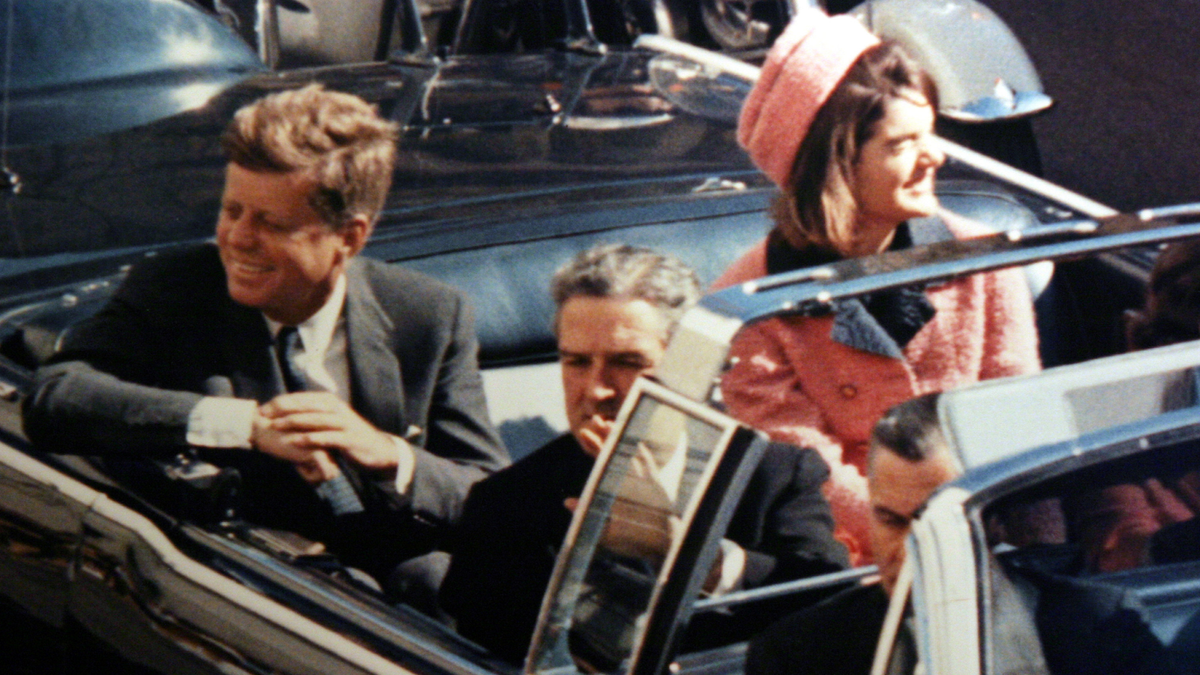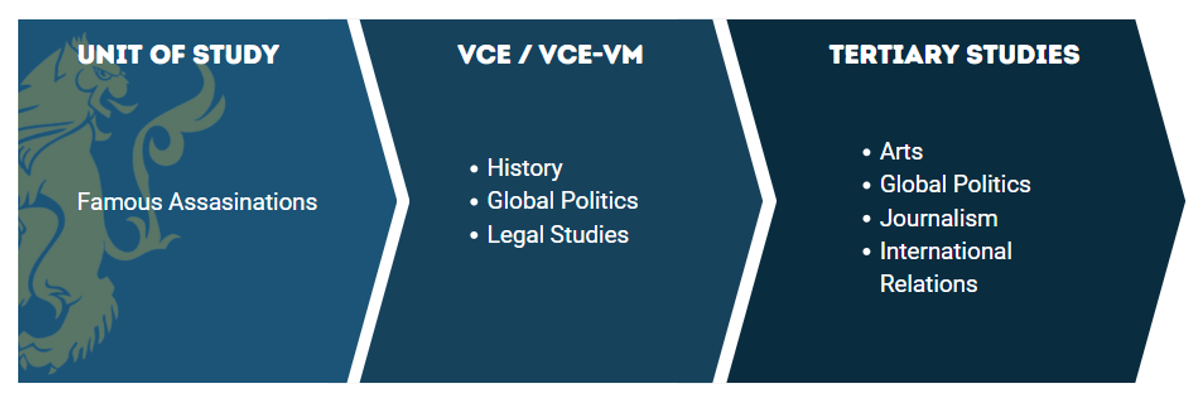Humanities - Famous Assassinations

Subject Area: Humanities / History
Unit of Study: Famous Assassinations
Brief Description: An investigation into the causes, impact and controversies surrounding ancient, medieval and modern assassinations. What led to the assassination of figures like JFK, Julius Caesar, Martin Luther King Jr., Archduke Franz Ferdinand, Tsar Alexander II and what was the political or social effect of this.
Scaffolding Learning
At the conclusion of this unit of study students will have:
An understanding of key knowledge
- Historical context in which the assassination took place
- Political, social or historical significance of the individual
- The perspectives of people and different historical interpretations and debates from the period
Attained these key skills
- Evaluate the historical significance of a key individual
- Analyse and corroborate sources and evaluate their accuracy, usefulness and reliability
- Analyse the long term causes, short term triggers and the intended and unintended effects of significant events and developments
- Construct and communicate an argument about the past using a range of reliable sources of evidence.
Demonstrated the Victorian curriculum standards and capabilities
- Analyse and corroborate sources and evaluate their accuracy, usefulness and reliability (VCHHC123)
- Investigating and explaining the emergence and the influence of individuals and/or groups on key ideas in the period, with a particular focus on one of the following: capitalism, socialism, egalitarianism, nationalism, imperialism, Darwinism or Chartism.
- Evaluate different historical interpretations and contested debates (VCHHC125)
Assessment Tasks
Students will be required to complete the following assessment tasks:
- Research into a famous historical figure who was assassinated
- Evaluation of the significance of this event in history
Additional learning opportunities
- Virtual job experiences via VR Headsets
Resources
- Booklet (supplied)
Pathways
This unit of study could provide students with the following pathway.

